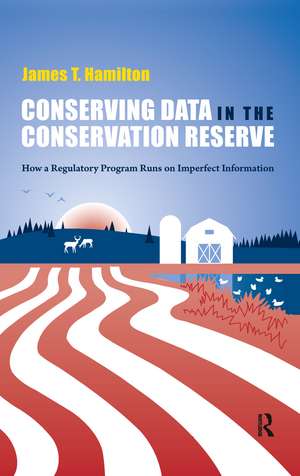Conserving Data in the Conservation Reserve: How A Regulatory Program Runs on Imperfect Information
Autor James Hamiltonen Limba Engleză Hardback – 26 feb 2010
Preț: 187.33 lei
Preț vechi: 228.89 lei
-18% Nou
Puncte Express: 281
Preț estimativ în valută:
35.85€ • 37.52$ • 29.83£
35.85€ • 37.52$ • 29.83£
Carte tipărită la comandă
Livrare economică 31 martie-14 aprilie
Preluare comenzi: 021 569.72.76
Specificații
ISBN-13: 9781933115825
ISBN-10: 1933115823
Pagini: 168
Dimensiuni: 156 x 234 x 18 mm
Greutate: 0.27 kg
Ediția:1
Editura: Taylor & Francis
Colecția Routledge
Locul publicării:Oxford, United Kingdom
ISBN-10: 1933115823
Pagini: 168
Dimensiuni: 156 x 234 x 18 mm
Greutate: 0.27 kg
Ediția:1
Editura: Taylor & Francis
Colecția Routledge
Locul publicării:Oxford, United Kingdom
Cuprins
AcknowledgmentsIntroduction 1. Information through the Policy Cycle 2. Defining the Environmental Benefits Index 3. Interpreting the Conservation Reserve Program in the Field(s) 4. The Mechanics of Monitoring: GAO, Congress, and the Federal Register 5. The Environmental Working Group Pulls the Pieces Together 6. Media Coverage and Academic Analyses: Cycles of Praise and Criticism 7. Information and Regulatory Implementation ReferencesIndex
Notă biografică
James T. Hamilton is the Charles S. Sydnor Professor of Public Policy, at the Sanford School of Public Policy, Duke University and Director of the DeWitt Wallace Center for Media and Democracy. His prior books include Regulation Through Revelation: The Origin, Politics, and Impacts of the Toxics Release Inventory Program and All the News That‘s Fit to Sell: How the Market Transforms Information into News.
Recenzii
'A beautifully written study of an important program that has not received sufficient academic attention. The Conservation Reserve Program has become an enormously important force for preventing non-point source pollution, providing wildlife habitat, and even reducing emissions of greenhouse gases...Conserving Data does a superb job of explaining the political and economic forces that have shaped the evolutionary path of the CRP.'Robert V. Percival, Director, Environmental Law Program, University of Maryland School of Law'Those working at the interface between science and policy will find it of interest, not least because with a light touch the story is informed by a small amount of political theory explained in the introduction.'John Hopkins, Bulletin of the British Ecological Society
